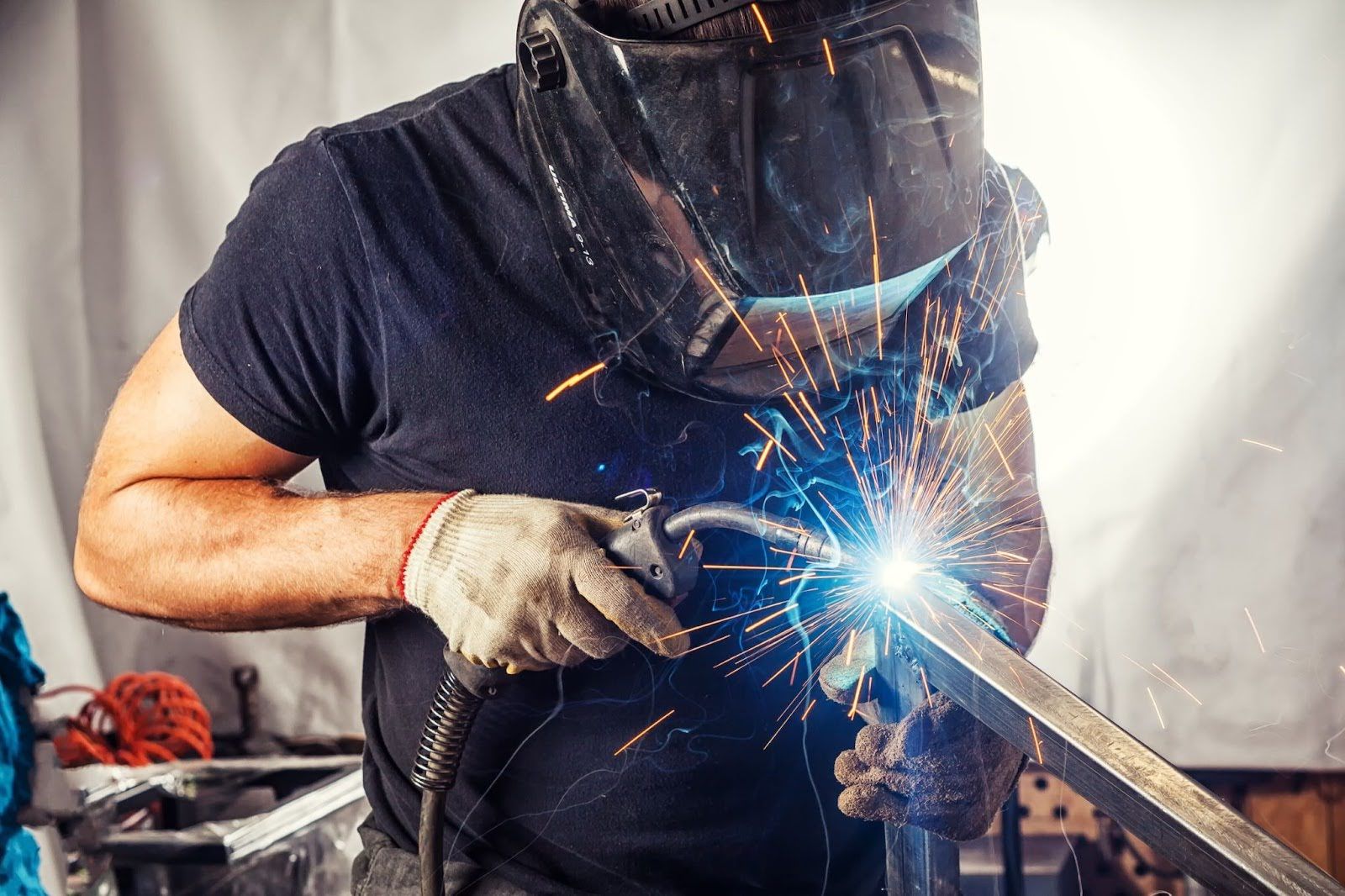Preventing Weld Undercut Demystified: Techniques for Success
Preventing Weld Undercut Demystified: Techniques for Success
Blog Article
Recognizing the Causes and Solutions for Undercut Welding in Steel Manufacture Procedures
In the world of steel fabrication procedures, the incident of undercut welding presents a considerable difficulty that requires a detailed understanding of its reasons and feasible options. The elaborate interplay of various elements during welding procedures can bring about this unwanted sensation, affecting the structural integrity and total quality of the welded joints - Preventing weld undercut. By studying the origin triggers of undercut welding and checking out reliable therapeutic actions, fabricators can elevate the requirement of their handiwork and ensure the manufacturing of flawless steel parts
Usual Reasons of Undercut Welding
Regularly forgotten in steel construction, undercut welding occurs as a result of different factors that require careful focus and knowledge to be effectively minimized. One typical source of undercut welding is extreme heat input. When the warmth input is expensive, it can lead to the melting and succeeding disintegration of the base product along the edges of the weld joint, creating a groove or undercut. Furthermore, improper welding methods, such as using the incorrect welding angle or take a trip speed, can additionally add to damage formation. Insufficient shielding gas protection is an additional essential variable that can lead to damaging. Insufficient gas coverage stops working to shield the weld pool adequately, causing oxidation and undercut defects. Additionally, the selection of welding parameters, such as voltage, present, and cord feed speed, plays a significant duty in the occurrence of undercut welding. Comprehending these usual causes is critical for applying precautionary actions and making certain high-quality welds in metal construction procedures.
Impact of Incorrect Welding Parameters
Incorrect welding criteria can significantly jeopardize the stability and top quality of welded joints in steel construction procedures. The impact of incorrect welding specifications shows up in numerous ways, leading to structural weaknesses and flaws in the bonded parts. Meticulous attention to welding parameters is critical to make sure the manufacturing of high-grade welds with the desired mechanical homes and structural stability.
Impact of Improper Torch Angle
Inappropriate lantern angle in welding procedures can dramatically influence the top quality and honesty of the last weld joints in steel manufacture procedures. The lantern angle plays a critical duty in identifying the heat input and distribution throughout welding. When the lantern angle is wrong, problems such as undercutting can occur. Undercutting is a common welding defect where a groove forms along the weld toe, weakening the joint and compromising its architectural honesty.
A lantern angle that is too high can bring about not enough infiltration, incomplete fusion, and enhanced spatter. On the other hand, a lantern angle that is as well shallow can cause extreme penetration, burn-through, and distortion of the base product. Preventing weld undercut. Appropriate torch angle is important for guaranteeing consistent weld high quality, stamina, and appearance
To protect against damaging and other issues brought on by improper lantern angles, welders should be trained to keep the go to these guys right torch angle throughout the welding procedure. Regular tracking and adjustment of lantern angles during welding can help accomplish sound welds with minimal flaws.
Function of Inadequate Welding Strategies

An additional facet of insufficient welding methods is incorrect weld preparation. Inadequate cleaning of the base steels, wrong joint style, or inadequate edge preparation can all add to undercut welding. Furthermore, inadequate securing gas insurance coverage or utilizing the wrong kind of gas can cause insufficient combination and the formation of undercut defects.
To attend to the role of inadequate welding strategies in steel construction processes, it is vital to offer comprehensive training for welders. Correct education on welding parameters, joint prep work, and shielding gas option can aid prevent undercut welding and ensure high-quality welds in steel fabrication jobs.
Effective Solutions for Undercut Welding
Attending to undercut welding in metal fabrication needs executing reliable services to boost weld high quality and architectural integrity. One of the main services to combat undercut is to change welding parameters such as voltage, present, and take a trip speed to make sure proper warm input and blend. By fine-tuning these settings, welders can stop too much melting of the base metal and filler product, reducing the probability of undercut formation.
Furthermore, correct joint preparation is vital in preventing undercut. Guaranteeing tidy base metal surfaces without pollutants and using the ideal bevel angle can assist promote better weld penetration and lower the risk of undercut - Preventing weld undercut. Utilizing ideal welding methods, such as oscillating the torch or weaving, can likewise help in dispersing warmth equally and filling the weld joint effectively, minimizing the possibility of undercut problems
Moreover, choosing the proper welding consumables, consisting of electrodes and filler steels, is essential in reducing undercut. Utilizing materials with suitable chemical structures and mechanical residential or commercial properties can add to accomplishing sound welds with very little undercut. Routine evaluation and quality control procedures ought to also be applied to detect and address undercut issues promptly, look these up ensuring the total honesty of made steel elements.

Verdict
To conclude, recognizing the reasons and services for undercut welding in metal construction processes is essential for achieving high-quality welds. By dealing with common reasons such as wrong welding criteria, incorrect torch angle, and poor welding strategies, welders can avoid undercutting and make certain solid, durable welds. It is important to take notice of these aspects and execute reliable options to improve the general welding process and end product top quality.

Report this page